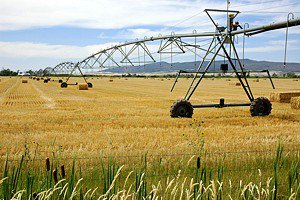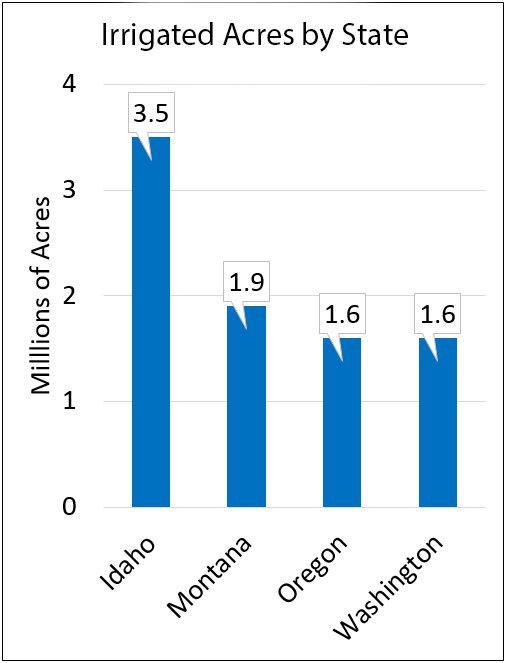Improving Irrigation System Efficiency and Its Impact on the Power System
Water savings could translate into more hydrogeneration and revenue
- March 16, 2018
- Carol Winkel

At its March meeting, the Council approved the release of its white paper on the value of improving irrigation system efficiency to the power system.
The annual average streamflow volume for the Columbia River is about 135 million acre-feet at The Dalles Dam; irrigation in the basin — mostly during the summer months — reduces streamflow by about 14.4 million acre-feet at McNary Dam.

In areas of the basin where conserved water wouldn’t be used for other purposes and could return to the river, replacing leaking equipment, worn-out sprinklers, and upgrading systems to improve watering efficiency and reduce evaporation could increase hydroelectric generation and revenue.
For example, a single leaking tower gasket on a center pivot system can lose 50,000 gallons of water (0.15 acre-ft) a season.
The Council’s Regional Technical Forum will be reviewing the consistency of how it incorporates non-energy benefits across all energy efficiency measures this summer. Stay tuned to the RTF for more information on this topic.
This paper is part of the Council’s Seventh Power Plan action plan to improve our understanding of electricity savings in water and wastewater facilities by reducing water use.
The Council invites public comment on the white paper until April 13.



